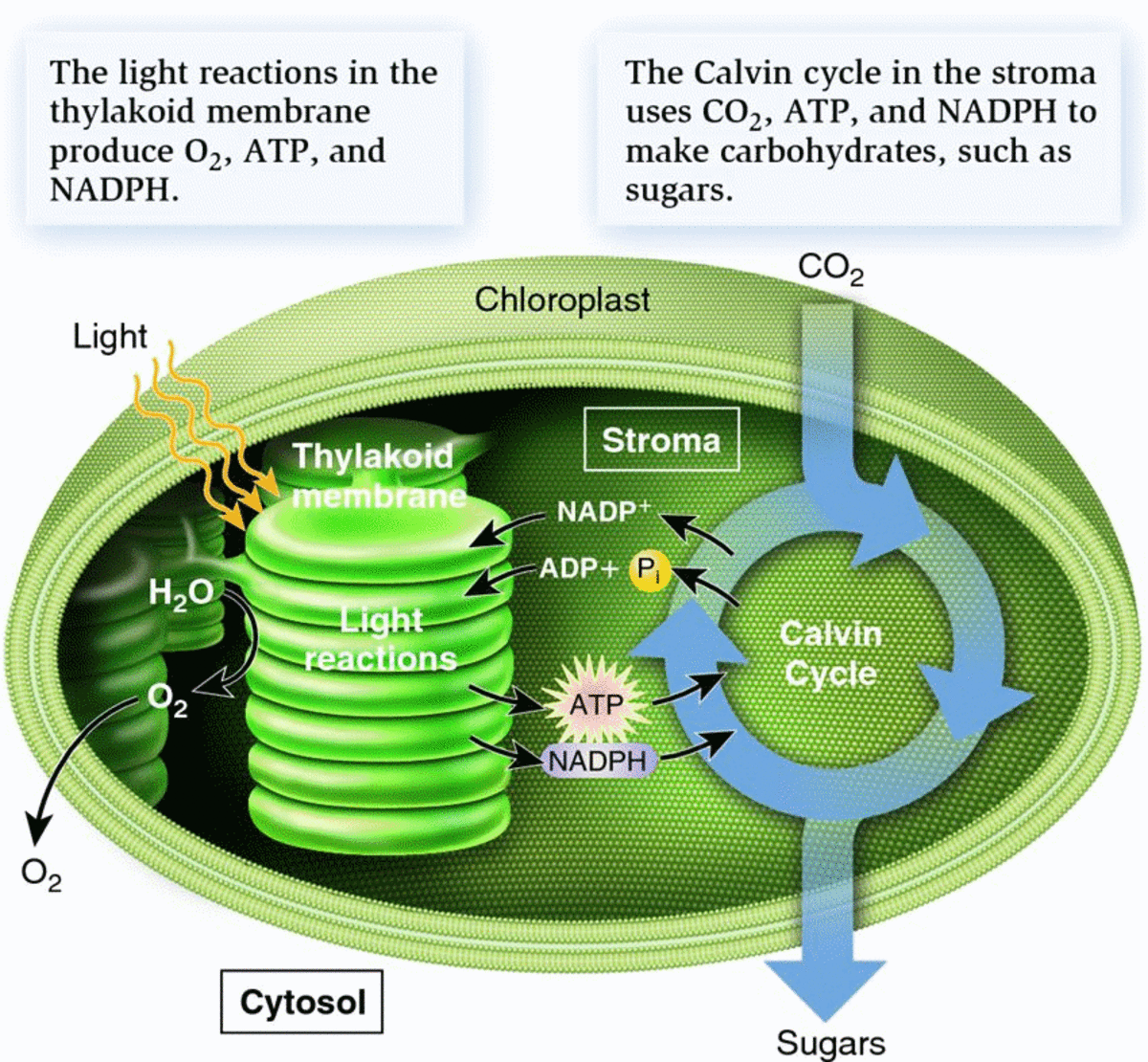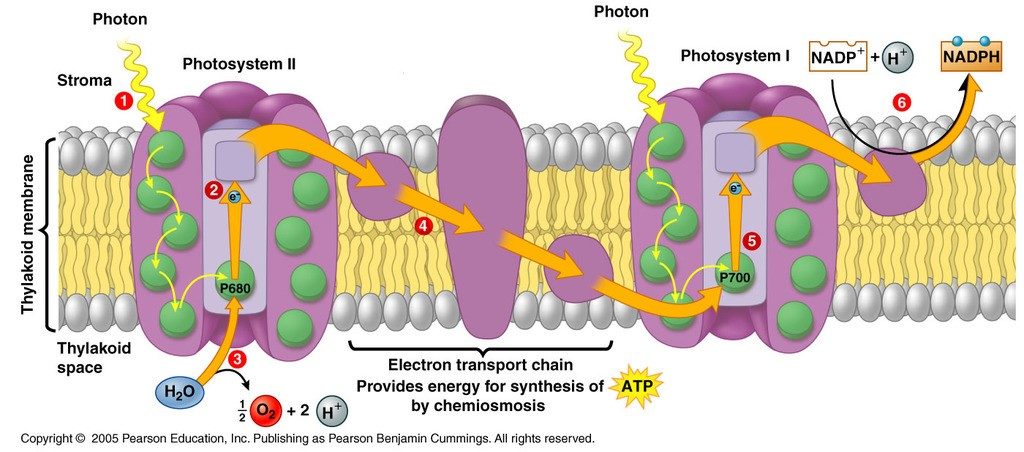Is stroma light independent – Is stroma light-independent? This question delves into the heart of photosynthesis, the process by which plants convert sunlight into energy. The stroma, a gel-like matrix within chloroplasts, plays a crucial role in this process, but its relationship to light is complex. While the stroma itself doesn’t directly absorb light, it houses the machinery for the light-independent reactions, also known as the Calvin cycle, which utilize the energy produced in the light-dependent reactions.
Think of the stroma as a bustling factory where the building blocks of life are assembled. It contains enzymes, ribosomes, and even its own DNA, all working together to convert carbon dioxide into sugar, the fuel that powers plant growth. This process, however, is dependent on the energy generated in the light-dependent reactions, which occur within the thylakoid membranes, the folded structures within the chloroplast.
The thylakoid membranes capture light energy and convert it into chemical energy in the form of ATP and NADPH, which are then shuttled to the stroma to power the Calvin cycle.
The Interplay Between Light-Dependent and Light-Independent Reactions: Is Stroma Light Independent

Photosynthesis, the process by which plants and other organisms convert light energy into chemical energy, is divided into two main stages: the light-dependent reactions and the light-independent reactions (also known as the Calvin cycle). While these reactions are distinct, they are intricately linked, forming a cohesive system that fuels life on Earth.
The Products of Light-Dependent Reactions Fuel the Light-Independent Reactions
The light-dependent reactions, occurring in the thylakoid membranes of chloroplasts, harness light energy to produce ATP (adenosine triphosphate) and NADPH (nicotinamide adenine dinucleotide phosphate), which are essential for the light-independent reactions. These reactions also release oxygen as a byproduct. The light-independent reactions, occurring in the stroma of chloroplasts, utilize the ATP and NADPH generated by the light-dependent reactions to fix carbon dioxide from the atmosphere and convert it into glucose, the primary energy source for plants and other organisms.
The light-dependent reactions generate ATP and NADPH, which act as energy carriers and reducing agents, respectively, for the light-independent reactions.
Interdependence Between Light-Dependent and Light-Independent Reactions
The two sets of reactions are fundamentally interdependent. The light-dependent reactions provide the energy and reducing power necessary for the light-independent reactions to proceed. Conversely, the light-independent reactions consume the products of the light-dependent reactions, driving the entire photosynthetic process.
Flow of Energy and Molecules
The following flowchart illustrates the flow of energy and molecules between the light-dependent and light-independent reactions:| Stage | Location | Input | Output ||—————–|——————–|———————–|————————-|| Light-dependent | Thylakoid membranes | Light, H 2O | ATP, NADPH, O 2 || Light-independent| Stroma | CO 2, ATP, NADPH | Glucose |The light-dependent reactions capture light energy and convert it into chemical energy in the form of ATP and NADPH.
These energy carriers are then transported to the stroma, where they are used by the light-independent reactions to convert carbon dioxide into glucose. The process is cyclical, with the products of one set of reactions fueling the other.
Stroma and its Role in Photosynthesis

The stroma, a semi-fluid matrix within chloroplasts, is the site of the light-independent reactions, also known as the Calvin cycle. This vital compartment plays a crucial role in transforming carbon dioxide into sugar, the primary energy source for plants and, ultimately, for most life on Earth.
The Stroma’s Environment for the Calvin Cycle
The stroma provides the necessary environment for the Calvin cycle to occur efficiently. It houses a unique set of enzymes, specifically tailored to catalyze the reactions of carbon fixation and sugar synthesis. The stroma also maintains a specific pH and ionic composition, essential for optimal enzyme activity.
The Importance of the Stroma’s Composition
The stroma’s composition is vital for supporting enzyme activity and carbon fixation. The presence of specific enzymes, such as Rubisco (ribulose-1,5-bisphosphate carboxylase/oxygenase), allows the stroma to fix carbon dioxide into organic molecules. The stroma’s high concentration of inorganic phosphate is essential for the Calvin cycle, which relies on ATP and NADPH produced during the light-dependent reactions.
The stroma’s unique composition provides the ideal environment for the Calvin cycle to occur efficiently.
The Stroma’s Structure Facilitates Energy and Molecule Transfer, Is stroma light independent
The stroma’s structure facilitates the efficient transfer of energy and molecules within the chloroplast. The stroma is interconnected with the thylakoid membrane, allowing for the transfer of ATP and NADPH generated during the light-dependent reactions. This close proximity ensures that the Calvin cycle has a continuous supply of energy and reducing power.
In essence, the stroma, while not directly involved in light absorption, is the site of the light-independent reactions, a critical step in photosynthesis. It receives the energy produced by the light-dependent reactions and utilizes it to convert carbon dioxide into sugar, a process that fuels plant growth and ultimately supports life on Earth. Understanding the intricate interplay between the stroma and the thylakoid membranes is key to grasping the complexity and efficiency of photosynthesis, the foundation of life on our planet.
Commonly Asked Questions
What are the main functions of the stroma?
The stroma serves as the site for the Calvin cycle, where carbon dioxide is converted into sugar. It also houses enzymes, ribosomes, and DNA necessary for protein synthesis and other metabolic processes within the chloroplast.
How is the stroma connected to the thylakoid membranes?
The stroma surrounds the thylakoid membranes, and they work together in photosynthesis. The thylakoid membranes capture light energy and convert it into ATP and NADPH, which are then transported to the stroma to power the Calvin cycle.
What are the key components of the Calvin cycle?
The Calvin cycle involves three main stages: carbon dioxide fixation, reduction, and regeneration of RuBP (ribulose bisphosphate). These steps are catalyzed by enzymes present in the stroma.






